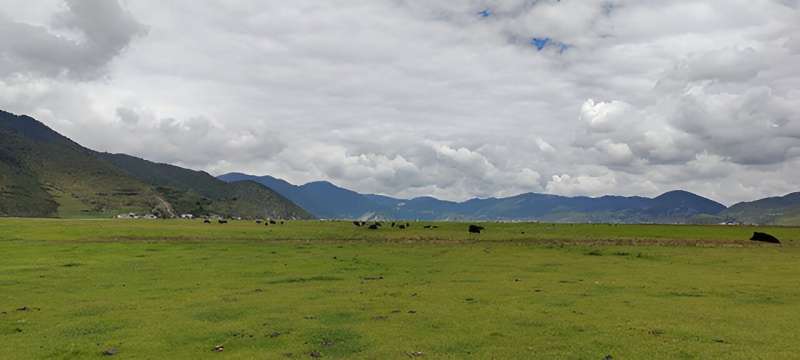This article has been reviewed according to Science X's editorial process and policies. Editors have highlighted the following attributes while ensuring the content's credibility:
fact-checked
peer-reviewed publication
trusted source
proofread
Deciphering the influence of the Tibetan Plateau on spring cloud cover and radiation budget

The Tibetan Plateau, towering as the world's highest and largest plateau, wields huge influence on Asian and even global weather patterns and climate systems. Over the downstream of the Tibetan Plateau, the global strongest cloud radiative cooling occurs over Southeast China from March to April. These clouds pack a powerful cooling punch, whose effect shapes temperature patterns and even local weather in Southeast China.
But why does this happen, and what's the connection with the distant Tibetan Plateau?
In response to these puzzles, researchers from the Institute of Atmospheric Physics (IAP) of the Chinese Academy of Sciences (CAS), First Institute of Oceanography at the Ministry of Natural Resources of China, the University of Birmingham, and the University of Exeter, have employed satellite retrievals, reanalysis data, and the latest CMIP6 GMMIP terrain experiments to explore the influence of the Tibetan Plateau on spring cloud cover and atmospheric radiation budget over East Asia.
They found that the Tibetan Plateau shapes the contemporary geographical distribution of spring East Asian cloud amount and atmospheric radiation budget to a large extent. By orchestrating airflows and radiation energy transfers, the plateau choreographs a pivotal role in dictating our skies and temperatures.
"Numerical experiments have unveiled that in the absence of the plateau's topography, cloud cover and cloud radiation cooling effects during spring over eastern and southern China decrease substantially," said Dr. Li Jiandong from IAP, lead author of the study. This experiment highlights just how much the plateau influences our climate system. When adding the plateau back into the equation, its shape enhances airflows that carry moisture, generating more clouds over South China.
But it's not just about clouds. The plateau's shape also heats the air, creating areas of low pressure over the plateau. "The plateau's thermal influence prompts surface warming and lower-level cyclones, while its heat pump effect draws air upwards on the eastern plateau side. This induces upward motion and water vapor convergence over southeastern China," said Dr. Ruth Geen from the University of Birmingham.
The study, published in Journal of Climate, bridges the gap in understanding how the Tibetan Plateau can impact its downstream weather and climate. By connecting the dots between the plateau's shape, cloud cover, and radiation budget, the researchers could better predict and understand regional climate.
More information: Jiandong Li et al, Mechanical and Thermal Forcings of Asian Large-Scale Orography on Spring Cloud Amount and Atmospheric Radiation Budget over East Asia, Journal of Climate (2023). DOI: 10.1175/JCLI-D-22-0797.1
Journal information: Journal of Climate
Provided by Chinese Academy of Sciences




















